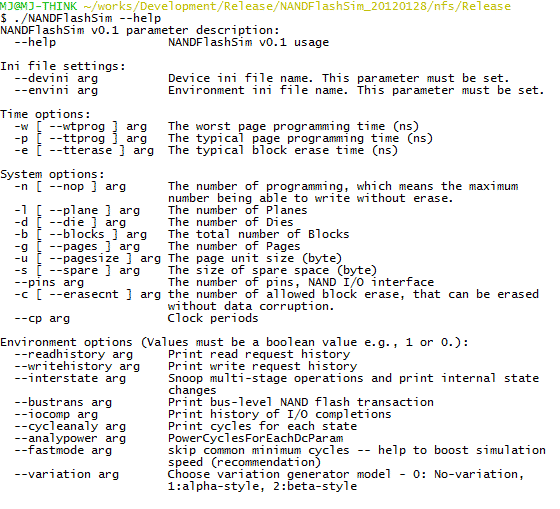INI files
NANDFlashSim takes two ini files from the command line:
- device.ini:
Statistics and parameters for a specific device - envronment.ini:
Flags and configurations for the simulation framework
device.ini file includes the time parameter information for both the typical-case and worst-case. Also, users can define the DC information, reliability issues, and NAND microarchitectural information such as the number of planes, dies, blocsks, pins, sparesize and clock periods. Users are able to log foot-prints and snooping NANDFlashSim internal information by defining values of Environment ini file.
Please note that we only provide a sample device.ini for Micron Technology MLC type NAND flash device, MT29F8G08MAAWC and MT29F16G08QASWC with permission of Dean Klein. Based on your research demands, you can configure your own devices.
Command-line Parameters
For users convenience, NANDFlashSim takes several common parameters including timing parameters, architectural configuration parameters, and simulation environment flags. When those parameters are defined both command line and ini files, NANDFlashSim takes those parameters from the command line rather than taking them from ini files.
Consider, as an instance, the situation that a user specify command-line parameters as follows:
$> NANDFlashSim --plane 2 --devini mydev.ini --envini myenv.ini
In this case, even though "NUM_PLANE=4" is already defined in mydev.ini, NANDFlashSim sets up an two plane architecture based on the user defined command-line parameter, "--plane 2", and ignores the NUM_PLANE parameter of mydev.ini. In this example, the configuration items which are not defined by the command line such as "NUMS_IOPINS" will be configured according to the value specified by mydev.ini .
A full list of the command line arguments can be obtained by typing:

